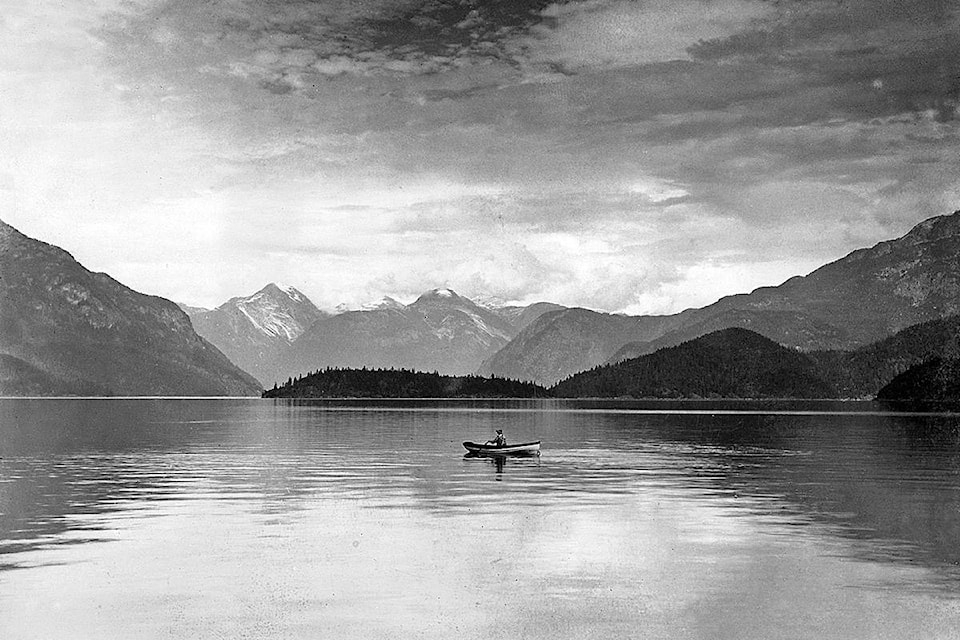By Erika Anderson,
Museum at Campbell River
Isolation is certainly not an unknown concept to the people who have lived on the Coast. In 1927, Carl and Bertha Christiansen took up residence at Salt Lagoon, also known as Roscoe Bay. It is a narrow inlet on the west side of Waddington Channel. For sixteen years, this 164 acre parcel of land was their home. It was where they grew their food, raised their children, and experienced hardship, joy, and tragedy.
Bertha was a young woman from Vancouver, and Carl was born in Denmark. He had struggled through life as a seaman, immigrant, hired hand and more as he tried to make his way through the world. They met in 1924 when both of them found themselves seeking relief for their arthritis in the Harrison Hot Springs. They married later that same year, and headed south to warmer climes in Guadalajara, Mexico. Bertha did not like it there, and left for San Francisco while Carl worked at sea and searched for a place that they could call home. He found the piece of land at Salt Lagoon and knew he had found their home.
Their first winter was spent in a tent. Heather Harbord called it a “temporary tent-house” in her book Desolation Sound. (Either way, as I sit here practicing social isolation in my house, I can’t help but think of the relative luxury in which I find myself compared to overwintering in a rainy isolated lagoon in only a tent.) The next summer Carl built a nice little home at Black Lake – just beyond the head of Roscoe Bay.
Carl was working as a logger and suffered an accident. He had to leave his family to seek medical attention. While Bertha was home with their two children, she was making jelly when the chimney of the woodstove caught fire. It was clear that it was too extensive of a fire for her to extinguish, so she made sure 3-year-old Maria and baby Joe were safely away from the structure, then she ran in and tried to save what she could. They went to a nearby logging camp for help, but there was nothing that could be done. Bertha took the family to stay with her mother in Vancouver until arrangements were made for a floathouse that they could live in.
Bertha continued to go to the city to seek treatment for her rheumatoid arthritis. She went back and forth for several years, but then developed heart problems as well and could not handle the wilderness of Desolation Sound any more. The children stayed with her sometimes in Vancouver, but eventually decided to stay with their father in Roscoe Bay and be homeschooled.
When they were in the city they missed the lifestyle of their isolated home. A few years later Carl decided after living in the Bay for 16 years he was ready to move on, and he and the children moved to Texada Island. At some point after they had left someone burnt down their homestead, leaving nothing behind but some remnants of their gardening efforts.
Maria Christiansen recounted some of her childhood memories to Heather Harbord for her book about Desolation Sound. Maria describes heading up to Mike Shuttler’s empty home in Melanie Cove to pick apples and pears. She recalls tending gardens and livestock, the Hallowe’en dance at Galley Bay, trapping mink, and going to Refuge Cove for the arrival of the steamships with mail and supplies. Although their life seemed challenging to some, the memories she shared look back fondly on the isolated lifestyle that she and her family led.
As with many organizations, the Museum is currently closed. We would love to stay connected with you over the coming weeks. Please join us on our social media channels, check out our new website, or send us an email.
